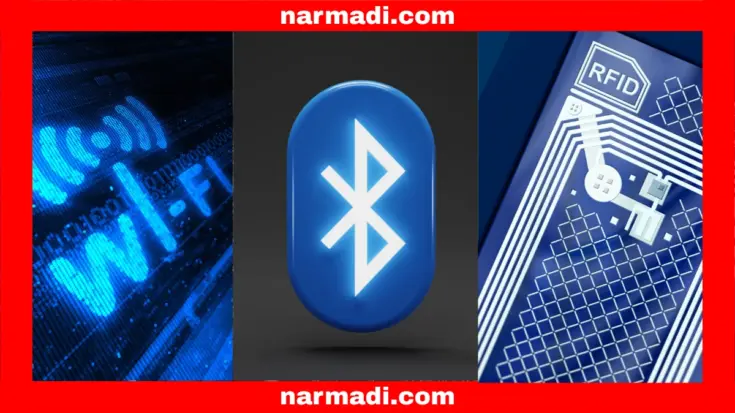Wireless, with all its innovations, has spread to various industries, and we can feel the benefits together in everyday life.
Of the many wireless products that we use every day, there are several types. Furthermore, wireless continues to provide innovations to the latest innovations today.
Do you already know what types of wireless we use today? This article will inform you about the types of this radio signal technology and their latest innovations.
Also Read
Table of Contents
Types of Wireless Technology

Various types of wireless technology have been applied in various fields of life. Here are some of them:
1. WiFi
WiFi (Wireless Fidelity) is one of the most common examples of what connectivity technology is. This technology allows devices such as laptops, smartphones, and tablets to connect to the internet with radio signal.
WiFi is used in homes, offices, and public places, making it the ultimate solution for connectivity needs.
2. Bluetooth
Bluetooth is a connectivity technology designed for short-distance connections, usually less than 10 meters. Examples include connecting headphones to a cell phone or a keyboard to a laptop. It is a practical answer to radio signal device communication needs.
3. RFID and NFC
This technology is used in various everyday applications. Radio Frequency Identification (RFID) is a connectivity technology device that can identify specific targets or objects, as well as read and enter data via radio signals. This technology is often used to track goods.
Meanwhile, NFC (Near Field Communication) is a technology that enables short-range wireless communication between two devices. This technology is often used to make digital payments or transfer data between devices at a very close range.
4. Zigbee and Z-Wave
Zigbee and Z-Wave are connectivity technologies designed to efficiently connect smart home devices such as smart lights, door locks, and sensors. Zigbee and Z-Wave form a mesh network for communication between devices.
The difference between the two is that Zigbee uses open standards and operates at a frequency of 2.4 GHz. Meanwhile, Z-Wave uses closed (proprietary) standards and operates at lower frequencies that vary in each region.
Latest Innovations in Wireless
The demand for speed, reliability, and connectivity from wireless technology has led to continuous innovation. Here are some innovations that demonstrate the development of this technology:
WiFi 7

WiFi 7 is a technological advancement that expands the 6GHz frequency range, allowing devices to send and receive data simultaneously across multiple frequency ranges.
This innovation enables ultra-fast data transmission for home and enterprise networks. It supports use in high-density environments such as offices, airports, and stadiums.
For those who need real-time applications such as 8K streaming, AR/VR devices, and gaming, WiFi 7 will provide a smoother experience.
Bluetooth Auracast
Bluetooth has introduced an innovation called Bluetooth Auracast, which allows one device to broadcast audio to multiple receivers simultaneously.
Unlike traditional Bluetooth, which can only be paired with one device at a time, Auracast uses a one-to-many broadcasting architecture.
Introduced in Bluetooth 5.3, this technology will revolutionize how users share sound in public spaces, from museums to airports and fitness centers. You will be able to listen to public announcements or audio from TV screens in public spaces directly on your personal device.
Ultra-Wideband (UWB)
Another major leap forward is Ultra-Wideband (UWB) technology, which is a short-range, high-bandwidth connectivity technology. UWB operates with very short radio pulses for fast and highly precise data transmission.
This technology provides centimeter-level accuracy in spatial awareness. Its current applications include smartphones and smart trackers as high-precision location detectors for car keys, asset tracking, and AR navigation.
IoT Connectivity

Internet of Things (IoT) connectivity is the latest innovation in wireless technology. IoT is a system that enables smart physical devices such as sensors, cameras, and household appliances to connect and communicate with each other.
Devices will automatically send, receive, and exchange data via Zigbee and Z-Wave networks for smart homes. Meanwhile, larger automation projects such as smart city monitoring and large-scale industries are supported by Low-Power Wide-Area Network (LPWAN) networks such as LoRaWAN and Sigfox.
Wireless charging
Wireless charging is the most modern charging technology. Power is charged using electromagnetic induction to charge devices such as cell phones, earbuds, and electric vehicles. Wireless charging offers convenience and ease, especially in the era of portable devices.
Challenges in Using Wireless

Although useful, wireless technology has several challenges:
- Data security: Wireless signals are vulnerable to hacking if not secured with strong encryption.
- Signal interference: Electromagnetic waves can be interfered with by other devices or physical obstructions such as thick walls.
- Distance limitations: Some technologies such as Bluetooth are only effective over short distances.
However, with continued innovation, many of these challenges already have solutions, such as the use of the WPA3 security protocol for WiFi.
These are the types of wireless and the latest innovations and the challenges in using them. Hopefully, this is useful for increasing your knowledge about wireless technology.
What you need to know is that every product with wireless technology that you want to market must go through tests and certification from the right Product Compliance Specialists in your country.











